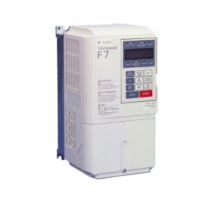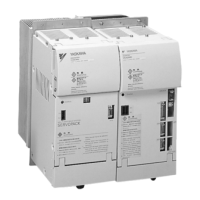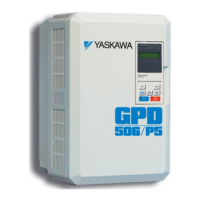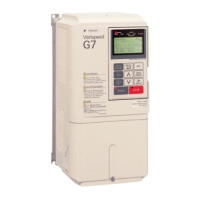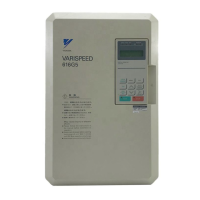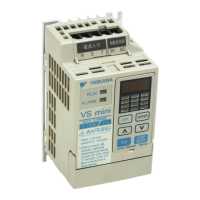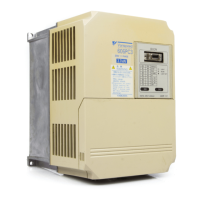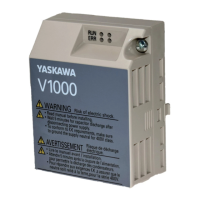Wiring Control Circuit Terminals
2-11
Applicable Wire Sizes
Tabl e 2.7 shows the wire size of each terminal. Select an appropriate wire size considering the current capac-
ity.
* Use shielded twisted-pair wires to input an external frequency reference.
Control Circuit Wiring Precautions
Observe the following precautions when wiring control circuits.
• Separate the control circuit wirings from the analog I/O (Terminals L1 to L9) wirings, relay sequence I/O
(Terminals 1 to 40) wiring, other power lines and power supply lines.
• Use shielded twisted-pair cables for analog I/Os (Terminals L1 to L9) to prevent malfunctions caused by
noise.
• Lay the shielded wires so that they will not have contact with other signal lines and devices.
• Tighten the screws with the specified tightening torque.
• Use closed-loop crimp terminals to connect cables to the terminal block.
• Use a Phillips screw driver to tighten terminal screws.
Table 2.7 Wire Sizes
Terminal Type
Te r mi-
nal
Code
Te r mi-
nal
Screw
Tightening
Torque
(N·m)
Applicable
Wire Size
mm
2
(AWG)
Recom-
mended
Wire Size
mm
2
(AWG)
Wire Type
(For reference)
Analog I/O ter-
minals
L1 to
L9
M3.5 0.8 to 1.0
0.5 to 2
(20 to 14)
1.25
(12)
• Shielded twisted-pair wire
*
Sequence I/O
terminals
1 to 40 M3.5 0.8 to 1.0
0.5 to 2
(20 to 14)
1.25
(12)
• Insulated vinyl sheathed cable
(CVV) for control circuit
Control power
supply input
terminals
RC, SC,
TC
M5 2 to 2.5
8 to 14
(8 to 6)
8
(8)
• 600-V vinyl insulated, vinyl
sheathed cable (VV)

